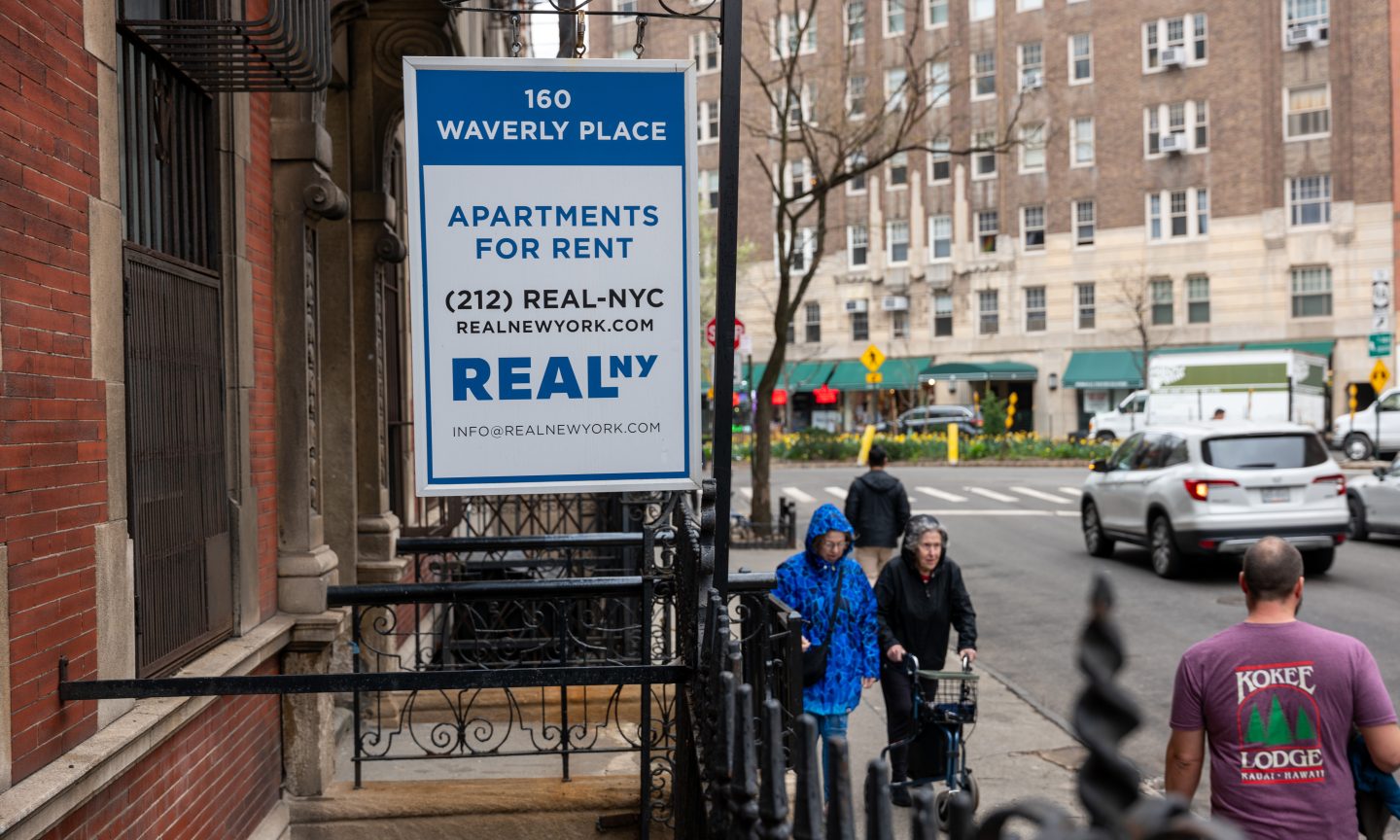
For those who hire your house in a serious metro space, likelihood is you already know this difficult reality: Your pay raises aren’t maintaining together with your hire hikes.
A brand new evaluation launched on Tuesday by the rental web site StreetEasy and its dad or mum firm Zillow discovered that hire development has surpassed wage development in 44 out of the 50 largest U.S. metros since earlier than the pandemic. The report analyzed rental information from each firm websites in addition to wage development information from the Bureau of Labor Statistics.
What’s driving hire value development? Nicole Bachaud, senior economist at Zillow, chalks it as much as a mixture of low stock of houses for buy, excessive prices of homeownership and few leases obtainable all placing stress on the rental market. And it’s not simply excessive costs retaining individuals of their rental houses — mortgage charges are additionally elevated, which will increase the price of shopping for a house.
“After we have a look at why we’ve got so many renters and a lot demand for leases proper now, it isn’t for lack of individuals wanting to purchase houses — it is for the shortage of means to have the ability to purchase houses,” says Bachaud. “There aren’t any houses that can be purchased and those which are obtainable are oftentimes unaffordable for almost all of potential consumers.”
What’s occurring to hire in main cities?
The present state of the rental market in most main cities is the results of the pandemic’s impression on the general housing market, says Bachaud.
Firstly of the pandemic, she says, there was a ton of demand for homebuying as a consequence of low rates of interest, however there weren’t sufficient houses obtainable to buy. That low stock has stayed low. Throughout the identical interval, the Federal Reserve hiked the federal funds price, which pushed up mortgage charges. This heightened value of homeownership has stored extra individuals within the rental market, and till homebuying circumstances enhance, they’re more likely to keep renters.
Biding your time within the rental market is smart for lots of people — and it’s the smart factor to do on a person degree. The issue is that the extra individuals who stay in a rental market with an current stock drawback, the extra stress it places on costs. When wages can’t sustain with the tempo of hire development, these rental markets turn out to be much more unaffordable. And that’s simply what occurred, based on the report: Nationwide, rents grew 30.4% from 2019 to 2023, about 1.5 instances sooner than wages, which grew 20.2%.
What are essentially the most unaffordable metro areas?
“For essentially the most half, in many of the nation, wages haven’t been capable of sustain with hire costs,” says Bachaud. “That’s extraordinarily true in Florida and in New York.”
From 2019 to 2023, two metros in Florida noticed enormous disparities between wage development and hire development: Tampa (34.7 share level distinction) and Miami (32.2 share level distinction).
“Throughout the previous few years, we had lots of people taking a look at what Florida has to supply with sunny climate, outside dwelling, and it was comparatively reasonably priced in comparison with different and coastal areas,” says Bachaud. “That threw lots of renters into that space, which has actually stored lots of the stress on, on rents, for the previous couple of years.”
In terms of hire unaffordability, New York Metropolis leads the pack by a protracted shot. Firstly of the pandemic, New York Metropolis was on the epicenter. As droves of renters left the town, hire costs dropped, however as quickly as providers and places of work started to reopen, demand to hire and purchase houses within the metropolis skyrocketed — an upward development that hasn’t slowed lately, says Bachaud.
From 2022 to 2023, New York Metropolis wages grew 1.2% as rents spiked 8.6% — that’s seven instances as quick. The report cites file low emptiness charges and excessive demand for the spike in hire development.
Bachaud says, “We now have about seven instances sooner development in hire in New York Metropolis, which is extraordinarily problematic for New York renters who’re making an attempt to maintain tempo with these rising costs as a result of they only do not need the revenue development to maintain that.”
So as to add to this discouraging image of hire affordability, three of the nation’s largest metro areas — Boston, Chicago and Memphis, Tennessee — really noticed wage development decline from 2022 to 2023 whilst hire costs climbed.
Some metros are seeing wages develop sooner than hire
Nevertheless, the rental affordability outlook is not all doom and gloom. From 2022 to 2023, Houston noticed rents enhance extra slowly than wages (5.Three share level distinction). One other Texas metropolis, Austin, has additionally seen wages outpace rents (4.7 share level distinction), largely as a consequence of new development, says Bachaud.
“Austin has simply been off the charts with new development, each within the for-sale and the rental aspect,” she says. “And in order that’s been actually, actually useful for renters to type of keep afloat in that space.”
Since 2019, six metro areas noticed wages outstrip rents, together with San Francisco and close by San Jose — two of the most costly metros within the nation: a 5.Eight share level distinction in San Francisco and a 5.Three share level distinction in San Jose.
“You could suppose San Francisco and San Jose are going to be essentially the most unaffordable given they’re the very best priced, however incomes are very excessive in that space as properly,” says Bachaud.
There are indicators of a rental price slowdown forward for a lot of different metro areas. When isolating for a one-year interval, from 2022 to 2023, wages have elevated sooner than rents in 21 of the 44 main metro areas. The best wage will increase in contrast with rents in that interval are in San Jose (5.Eight share level distinction); Houston (5.Three share level distinction); and Raleigh, North Carolina (3.Eight share level distinction).
Hire development is slowing even when inflation information doesn’t present it but
Even when rents are outpacing wages, the rental market is stabilizing. “We’re seeing rents return to regular ranges of development,” says Bachaud. “Final 12 months, rents grew 3.4% — it’s rather a lot decrease than when it was 20% or 30%.”
New multifamily development will possible be a giant a part of the worth slowdown. “Including extra rental availability goes to take lots of that stress off of the demand for issues, and we’re going to have extra alternatives for leases developing shortly sooner or later,” she says.
A 12 months in the past, Zillow predicted that inflation information, specifically the shopper value index, would quickly begin to present hire costs cooling off. As a result of nature of rental leases, there’s sometimes a 12- to 15-month lag in how present rents are mirrored in inflation information. In order that hasn’t occurred but.
“Whereas we’re seeing issues slowing down and getting again to regular, we nonetheless do have optimistic hire development,” says Bachaud. “That doesn’t appear like it’s going away anytime quickly, we’re simply type of again within the regular vary. And so we type of count on, hopefully throughout the subsequent couple of months, to see that translating into inflation, as properly.”
(Photograph by Spencer Platt/Getty Photographs Information by way of Getty Photographs)




